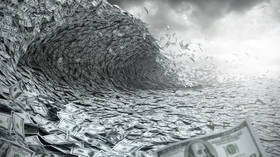The amount of liquefied natural gas (LNG) running from entry terminals to the European gas transmission system has reportedly set a new monthly record in January, hitting the highest for this month since records began in 2011.
Some 405 million cubic meters of gas were delivered to Europe as of January 28, marking an enormous increase of 110% compared to the annual average for this date over the past five years, according to data from the Gas Infrastructure Europe trade group, as quoted by TASS.
The capacities of re-gasification of LNG and further injections of the fuel into pipelines in Europe are currently loaded at 67.4% of the maximum, the group’s data shows.LNG stocks in European gas storage tanks are 5% above the five-year average, which is thought to be quite high for the end of January.
Earlier this week, the WSJ reported that more than two-dozen tankers loaded with LNG were en route from the US to Europe, lured by high prices in the region, with another 33 ships also likely to head to the EU.
The European energy crunch, which has sent gas and power prices soaring, was exacerbated when storage tanks in the EU dropped to their lowest seasonal levels in more than ten years. The decline was attributed to longer-than-usual maintenance at Norwegian fields and to Russia restocking its own inventories.
On January 27, the loading levels of gas reserves in underground storage facilities in Europe dropped to 39.22%, which is 15.6% less than the annual average for this date over the past five years. The storage tanks currently contain 42.34 billion cubic meters, 15.7 billion cubic meters less than in 2021.
Additionally, the latest speculation over probable military conflict between Russia and Ukraine continues fueling concerns about the supply of Russian gas. The US and Western allies have pledged to impose a new series of anti-Russian sanctions in the event of an invasion, the very idea of which has been repeatedly rejected by Moscow. The sanctions, reportedly, may target Russian energy sales.
For more stories on economy finance visit RT’s business section
Article source: https://www.rt.com/business/547765-europe-lng-supplies-record-high/?utm_source=rss&utm_medium=rss&utm_campaign=RSS





